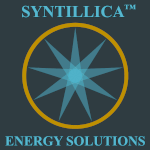
New geothermal agreement aims to advance hydrothermal projects; develop and deploy EGS at scale
Global energy technology company SLB and leading geothermal and renewable energy company Ormat Technologies have announced an agreement to fast-track the development and commercialization of integrated geothermal assets, including enhanced geothermal systems (EGS). EGS is the next generation of geothermal technology, meant to unlock geothermal energy in regions beyond where conventional geothermal resources exist.
Together, SLB and Ormat intend to streamline project deployment, from concept to power generation. As part of this effort, they will develop, pilot and scale EGS solutions to enable wide-scale EGS adoption. This collaboration will include the design and construction of an EGS pilot at an Ormat site.
Key Highlights:
- Joint Technology and Project Development: SLB and Ormat will co-develop and deploy integrated geothermal assets and EGS systems designed for optimal long-term performance, leveraging Ormat’s expertise in power plant design, development and operations, and SLB’s strengths in subsurface, reservoir engineering and well construction.
- EGS Pilot Project: The integrated solution will be demonstrated at an existing Ormat facility, covering all aspects of the development cycle and validating commercial-scale EGS deployment.
- Commercial Scale-Up: Following the pilot, SLB and Ormat will jointly pursue large-scale EGS commercialization for independent power producers, utilities, and other customers including data center operators.
'There is an urgent need to meet the growing demand for energy driven by AI and other factors. This requires accelerating the path to clean and reliable energy,' said Gavin Rennick, president of New Energy at SLB. 'By partnering with Ormat, we will work to make both traditional hydrothermal and EGS technologies truly competitive and commercially viable systems that can scale quickly to meet global energy demand through the coming decades. Our EGS pilot project will serve as a critical platform to address both technical and economic challenges, significantly de-risking and broadening the commercial application of EGS. As a global energy technology leader, SLB is developing a strategic technology portfolio to accelerate the growth of the geothermal industry worldwide.'
The first joint demonstration project will fast-track the development of a complete set of new technologies and techniques needed for EGS, as well as optimizing integration with surface facilities to maximize production and sustainability.
'Ormat is pleased to partner with SLB to accelerate the development and deployment of integrated geothermal assets and next-generation EGS solutions,' said Doron Blachar, Chief Executive Officer of Ormat Technologies. 'As the global energy transition progresses AI-driven demand increases, scalable and sustainable energy solutions are more critical than ever. By bringing together the world's leading experts in subsurface and geothermal power plant technologies, Ormat and SLB will accelerate the path to rapid deployment of commercial scale EGS facilities. Our collaboration aims to advance the commercial viability of EGS technologies and represents a significant step forward in the geothermal industry. As the global leader in geothermal project development, Ormat expects to expand its development pipeline following a successful pilot and is committed to delivering reliable, sustainable, and efficient energy solutions to meet the demands of AI, data centers and the broader energy transition.'
Traditional geothermal systems leverage natural hot water or steam reservoirs underground, limiting geothermal technology use to certain natural conditions. EGS systems are designed to effectively create thermal reservoirs in naturally hot rock through which water can circulate, transferring the energy back to surface for the purpose of power generation, greatly expanding the potential application of geothermal energy. The U.S. Department of Energy estimates that next-generation geothermal could provide 90 gigawatts (GW) by 2050, and potentially up to 300 GW in the U.S. alone.
Source: SLB










